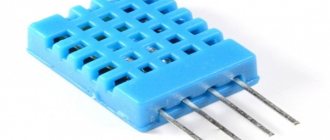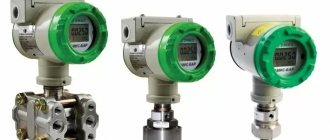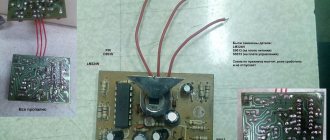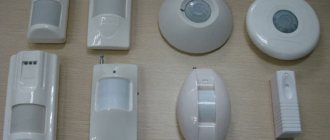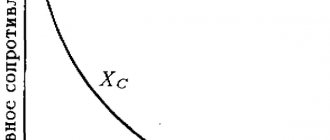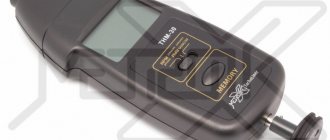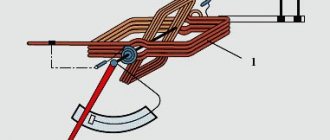Design features and operating principle
The design of liquid level meters in a tank is determined by the following characteristics:
- Functionality. Based on this parameter, all measuring devices of this class are classified into level meters and liquid level alarms. The latter determine the specific filling point of the container (maximum and minimum), while the former constantly monitor the liquid level.
- Operating principle. This parameter is based on acoustics, optics, magnetism, electrical conductivity, and so on. The scope of its application depends on the principle of operation of the device.
- Measurement technique (non-contact or contact).
In addition, the design features of the device determine the type of process environment. For example, level gauges in drinking water tanks are different from devices that are designed to measure the fullness of tanks with industrial wastewater.
Vibration level gauges
Vibration level gauges are reliable and have a wide range of applications. The design and operating principle of these devices minimizes their sensitivity to the chemical and physical properties of the substance being measured. Also, vibration level gauges show accurate results in turbulence, the presence of air bubbles in liquid media, and other unfavorable operating conditions.
The operating principle of a vibration level gauge is based on the difference in the resonant oscillations of the sensitive element - a tuning fork resonator - in a gas (air) environment and in a liquid (bulk material). The vibrating element is driven by the piezoelectric method and vibrates with a mechanical resonant frequency of approximately 1200...1300 Hz. Piezoelements are mechanically fixed and are not exposed to thermal shock. When the vibrating element is immersed in the measured medium, the frequency changes. This frequency change is captured by the built-in oscillator and converted into a switching command.
The following vibration level meters are available for order: SKAT-5-S bulk material level indicators, SKAT-5-Zh liquid level indicators, SKAT-5M small-sized liquid level indicators.
| SKAT-5-S level indicators for bulk materials | SKAT-5-Zh liquid level indicators | SKAT-5M small-sized liquid level indicators |
For questions regarding the purchase and selection of electrical level meters, you just need to call +7 (4812) 209-311 or write by email
Types of sensors
All level gauges are classified according to the principle of their operation. Main types of measuring devices:
- Float _ This is the simplest option for measuring the water level in the tank. The design of the float level gauge includes 2 reed switches, a magnet and a float. As the fluid level increases, the float rises to the first reed switch, which turns off the motor relay. If the reservoir is empty, the float drops to the second reed switch, which triggers the relay and turns on the pump that pumps liquid from the well. You can make a reed limit liquid level sensor with your own hands. Moreover, it will work even if there is a voluminous layer of foam in the tank.
- Ultrasonic . This type of measuring device is used for both dry and liquid media. Ultrasonic sensors can have a discrete or analog output. That is, the device can constantly monitor the water level or limit the filling of the container when it reaches a specific point. Such a level gauge consists of a receiver, an ultrasonic emitter and a controller responsible for signal processing. Ultrasonic type alarms are wireless and non-contact, so they can be installed even in explosive and corrosive liquids.
- Electrode (conductometric). Such level meters are not suitable for containers with distilled water. The standard design is equipped with a three-level alarm, in which the filling of the tank is controlled by a pair of electrodes, and the third is intended for emergency situations, to start the active pumping mode.
- Capacitive . Using such level gauges, the maximum filling level of a tank can be accurately identified. They are suitable for both liquids and bulk substances. Capacitive level gauges operate on the same principle as capacitors: the measurement is performed between the plates of the sensing element. When the peak value is reached, a corresponding signal is sent to the controller. Sometimes capacitive alarms operate on the “dry contact” principle, in which the device is triggered through the wall of the tank. These devices can operate effectively over a very wide temperature range and their operation is not affected by electromagnetic radiation. Such performance properties expand the scope of use of capacitive level meters.
- Radar . This type of alarm is universal, as it works with any type of process media, including explosive and corrosive liquids. In this case, the readings will not change under the influence of temperature and pressure. The device emits radio waves in a certain frequency range. The receiver picks up the reflected radio signal and determines how full the tank is, based on the signal delay period. The measuring sensor is not affected by temperature and pressure. The dustiness of the process environment also does not affect the readings. Experts note that radar devices have maximum accuracy, since their error does not exceed 1 mm.
- Hydrostatic . This type of alarm allows you to measure both the current and maximum filling of containers. The operating principle of a hydrostatic device is based on measuring the pressure of a liquid column. The popularity of such sensors is due to their low price and sufficient accuracy.
There are other types of devices, but they have specific purposes.
Ultrasonic level gauge[ | ]
Ultrasonic level meters are used for continuous level measurement of liquids and solids in almost all industries.
Measuring principle[ | ]
Ultrasonic level gauge in operation on a Parshal tray
Short ultrasonic pulses in the range from 18 to 70 kHz are emitted by the sensor in the direction of the medium being measured, reflected from its surface and again captured by the sensor. The pulses travel at the speed of sound, and the time between the moment of emission and reception of the signal depends on the filling level of the tank. The latest microprocessor technology and proven software guarantee reliable level echo detection even in the presence of false echoes reflected from internal structures, and highly accurate calculation of the distance to the surface of the measured medium. To compensate for the influence of the acoustic signal travel time, an integrated temperature sensor detects the temperature in the tank.
By simply entering the tank dimensions and the measured distance, a signal proportional to the level is calculated. Thus, there is no need to fill the container to make fine adjustments.
Continuous ultrasonic level measurement has proven its effectiveness. Ultrasonic level meters are suitable for measuring rainwater and wastewater, for liquids with low or high levels of contamination, containing solids or sludge. It goes without saying that when working with solids, different requirements are placed on the measuring device than when working with liquids. After all, the surface of the product being measured is uneven and often looks like a bulk cone. Many substances cause intense dust formation. In addition, many solids tanks are much taller than liquid tanks.
Principle of reflex radar level measurement
Selection rules
Selecting a level gauge for tanks must take into account a large number of factors. Among them:
- water composition;
- the volume of the container and the material that was used to make it;
- the need to control the maximum and minimum liquid levels or monitor the actual condition;
- the possibility of introducing automatic control into the system;
- switching capabilities of the device.
To select household devices, it is important to consider the capacity volume, control circuit and operating principle.
Float level gauge[ | ]
Measuring principle[ | ]
Operating principle of a float level gauge
The magnetic bypass level indicator operates on the principle of communicating vessels. The measuring chamber is installed close to the container so that the conditions in the measuring chamber and in the container are the same. The float is equipped with a system of permanent magnets designed to transfer measured values to a local indicator. The float magnet system either activates the magnetic plates (flag indicator) in accordance with the liquid level, or moves the magnetic pointer in the indicator depending on the selected indication method. Level indication is carried out by changing the position of a group of vertically located magnetic flags or based on the position of the magnetic pointer.
Popular models
The modern market offers many models of alarms . The most popular of them:
- DE-1 (capacitive sensor). Most often, this alarm is used in aggressive environments in the chemical and metallurgical industries. It allows you to control the temperature and level of bulk and liquid substances. Often used in emergency protection installations.
- ESU-1 (electronic level switch). The body of this model is made of high quality steel and fluoroplastic. Most often, ESU-1 is installed in explosive and aggressive environments. The power source is located outside the process environment. The sensor measures the level of oil, alcohol and water. The power supply is made of durable aluminum alloy.
- RU-305 (level relay). This device is designed to monitor the condition of liquid media. Its body is made of special material and can easily withstand temperatures from -50 to +50 degrees Celsius. However, RU-305 must not be used in aggressive chemical environments. Among the disadvantages of this level gauge, consumers note only that it works only in one position, without tilt. Level measurement is carried out by moving a magnet with a float and triggering a reed switch. Measurements have an accuracy of no more than 5 mm.
- SU-100 (level alarm). Sensor for measuring the level of bulk and liquid substances. The SU-100 design contains an electromagnetic relay.
- Rosemount 5600 This radar level sensor allows non-contact measurement of any type of substance. To achieve the most accurate readings, the level gauge must be installed correctly. The device's reading accuracy may be degraded by exposure to electromagnetic radiation. The housing has an explosion-proof design and a display that displays all the necessary information. The Rosemount 5600 can be used to measure tank temperatures. To fully evaluate the capabilities of this equipment, it requires qualified adjustment taking into account the diameter of the pipeline, the length of the level gauge and the distance between the level and the reference point.
It is advisable to purchase complex models only for industrial use. The simplest versions of level meters are suitable for domestic purposes.
Capacitive level gauges
The operating principle of capacitive level gauges is based on the difference between the dielectric constant of the controlled medium (aqueous solutions of salts, acids, alkalis) and the dielectric constant of air or water vapor. The measuring circuit of the capacitive level gauge is shown in Fig. 1.
Rice. 1. Capacitive level gauge: 1, 2 - electrodes; 3 - electronic unit
A converter, which is an electric capacitor, is lowered into a vessel with a controlled liquid. The capacity of such a capacitor depends on the level of the electrically conductive liquid. Transducers can be plate-shaped, cylindrical or rod-shaped.
Cylindrical transducers are made of several pipes arranged concentrically, the space between which is filled to a height h by the controlled liquid. The capacitance of the converter is equal to the sum of the capacitances of its two sections - immersed in a liquid with one dielectric constant (εl) and located in air with a different dielectric constant (εav, for air εav = 1).
When measuring the level of aggressive but non-electrically conductive liquids, the transducer plates are made of chemically resistant alloys or covered with a thin anti-corrosion film, the dielectric properties of which are taken into account in the calculation. Coating plates with thin films is also used when measuring the level of electrically conductive liquids.
The most popular types of capacitive level gauges are: ISU-100I single-channel capacitive level gauges, ROS-101 (-102) capacitive level gauges, SU-100 capacitive level gauges.
| ISU-100I capacitive single-channel level gauges | ROS-101 (-102) capacitive level switches | SU-100 capacitive level switches |


